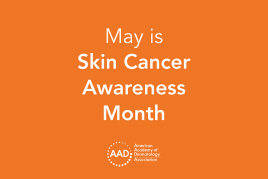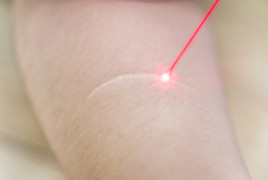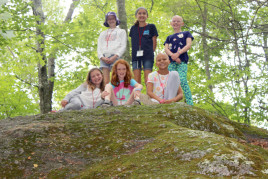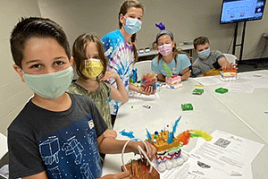Hair care: Hair loss (ages 8-10)
Good Skin Knowledge lesson plan
Time: 45 min
Objective
Students will be able to:
Identify two reasons people lose hair
Understand that hair loss can happen to anyone
State that hair does not make someone a good friend
Materials
Markers, crayons or colored pencils
White board and marker (optional)
Important
If there is a student in the class who is experiencing from hair loss, be very sensitive to the topic. It may be necessary to skip the questions asking whether the students know anyone who has lost hair. During the activity, if the student clearly feels uncomfortable or clearly has alopecia, have the student write down how they feel, but do not pressure the student to share or participate.
Assessment
During Introduction of New Material, assess if students grasped new material by asking reinforcement questions and checking for questions/clarifications.
During the Closing, assess if students grasped the idea that a good friend is not related to having hair by having the students share their work and asking questions.
Opening
3 min
Ask students if they have ever seen anyone without hair on their head. If students say “Yes,” ask, “Who?” If students say “No,” or are unresponsive, ask pointed question such as, “How about an old man! Your grandpa? Or an uncle? Or someone from TV?”
Ask, “Why do you think those people lost their hair?” Briefly discuss.
Introduction to new material
10 minutes
Materials: Why Are You Losing Your Hair handout
Ask students, “Can women lose their hair?” and waits for students to respond.
Then ask students, “How about kids? Can kids lose their hair?” Regardless how students answer, ask them “Why?” and have a brief discussion.
Explain, “Actually. Anyone can lose his or her hair. Kids. Adults. Young men. Old men. Young women. Old women. Boys. Girls. Anyone.”
Then to reinforce material, ask, “So can women lose their hair?” Students should say, “Yes.” If students say, “No,” go over that anyone can lose his or her hair again.
Then to reinforce, ask, “Can kids lose their hair?” After students should say, “Yes.” respond, “Right! Anyone can lose his or her hair!” If students say, “No,” go over that anyone can lose his or her hair again.
Distribute Why Are You Losing Your Hair handout and go through each point with students. Make sure to explain that this is not always something we can control, especially with alopecia, cancer treatment, and nutrition.
Answer questions.
Guided practice
5-10 minutes
Materials: White board and marker (Optional)
Open a discussion with students by asking, “I’m sure you all have a favorite aunt or uncle. Or a friend. What makes them a good person? A good friend?”
If students are unresponsive, ask questions like, “Do they make you laugh? What are some reasons you think they area good friend? Why do you like your uncle or aunt?”
Discussion should not be too long, but long enough so students have an idea of some adjectives they would use to describe a friend or family member they like/love.
If there is a white board, write some of the adjectives on the white board.
Independent practice
10 minutes
Materials: Recipe For A Friend worksheet, coloring utensils
Distribute Recipe For A Friend worksheet to the students.
Explain directions:
We just talked about what makes someone a good person (Give some examples of the adjectives they came up with as a group.)
Now on the worksheet you have, we are going to write down the recipe for a friend. What are the ingredients? We just talked about some of the things that makes a good friend.
In each box, you can write down an ingredient for a good friend. Maybe “funny” is something that is important, or “nice.” Then draw a picture to represent that word.
We will go over these at the end of class.
Pass out markers, crayons or colored pencils.
Closing
10 minutes
Ask if anyone would like share his or her recipe and show the pictures. After maybe two students (depending on time), move to Step 2.
Remark, “So you know what I noticed? Most [hopefully all] of these don’t include one thing…hair! Hair doesn’t seem to be important in a friend or family member. Why is that?”
If students are unresponsive, try rephrasing question.
Hold brief discussion reinforcing the idea that, hair does not make someone a good friend—it’s who they are and their personality that does.
 Think sun protection during Skin Cancer Awareness Month
Think sun protection during Skin Cancer Awareness Month
 How to care for your skin if you have lupus
How to care for your skin if you have lupus
 Practice Safe Sun
Practice Safe Sun
 Sunscreen FAQs
Sunscreen FAQs
 Fade dark spots
Fade dark spots
 Hidradenitis suppurativa
Hidradenitis suppurativa
 Laser hair removal
Laser hair removal
 Scar treatment
Scar treatment
 Botox
Botox
 Kids' camp - Camp Discovery
Kids' camp - Camp Discovery
 Dermatologist-approved lesson plans, activities you can use
Dermatologist-approved lesson plans, activities you can use
 Find a Dermatologist
Find a Dermatologist
 Why choose a board-certified dermatologist?
Why choose a board-certified dermatologist?